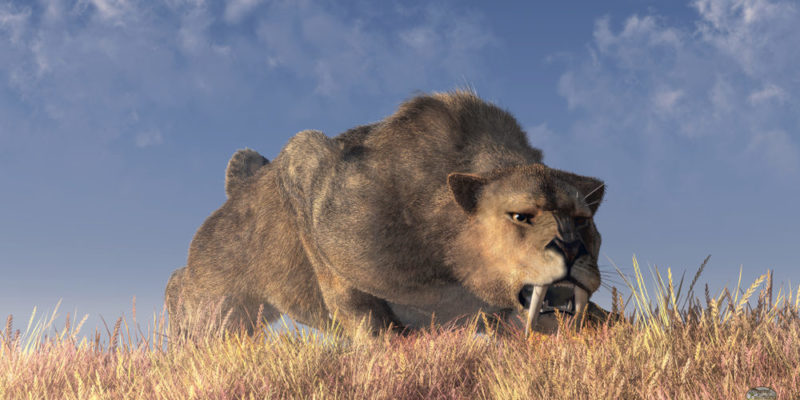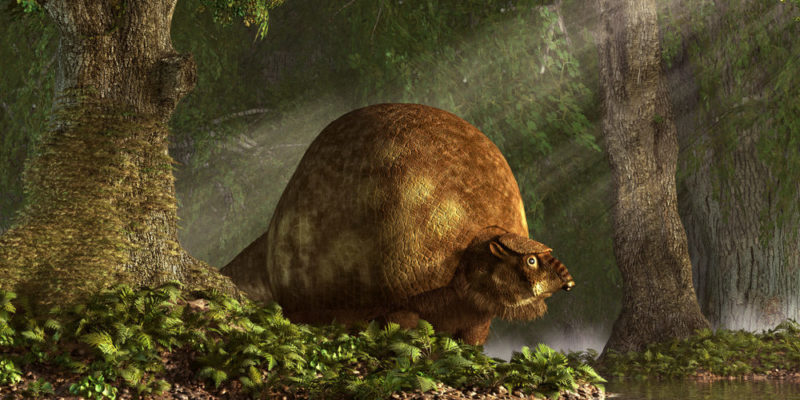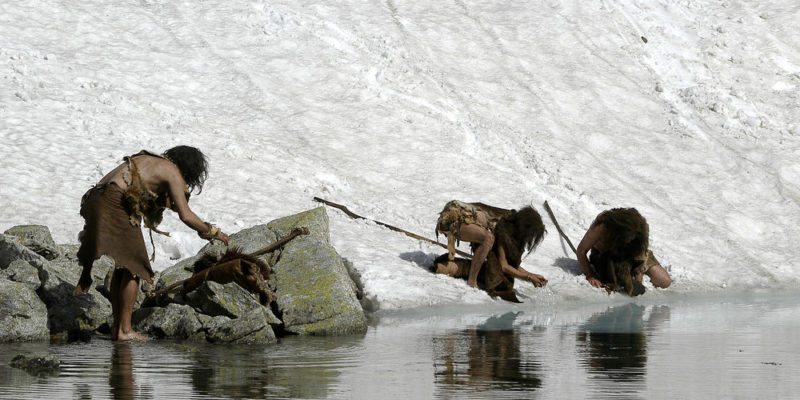We explain what the Quaternary Period was, how it is divided and the climate it presents. Also, what are its characteristics, flora and fauna.
What was the Quaternary period?
On the geological time scale, the Quaternary period is the last time division of the Cenozoic Era (started 66 million years ago and continues to the present day). It began 2.59 million years ago, when the Neogene culminates, and extends to the present day, or until the beginning of the history of human civilization.
Perhaps because it is relatively recent, it is the most and best studied period of geological history of all , since its footprints, fossils and substrates can be found without difficulty near the surface of the Earth and on the seabed. In this period Homo sapiens appeared on Earth.
The name "Quaternary" was given to it in 19th century France , by the geologist Jules Desnoyers, when an outdated method of nomenclature was used for geological layers. It is also known as the Anthropozoic Era , since it is the era in which the human being appears.
Previous period
Formerly the Tertiary period was called the first part of the Cenozoic Era , from the extinction of the dinosaurs to the emergence of the first hominins in the ice ages.
At present, the study of the first part of the Cenozoic Era separated into two periods: Paleogene and Neogene is preferred .
In this period the world was reorganized geologically until it reached the configuration that we know today.
It was a stage of resurgence and diversification of organisms. The mammals were the new dominant life form , finding the free field to proliferate and multiply.
Quaternary Division

The Quaternary period is divided into two distinct epochs:
- Pleistocene. It begins about 2.5 million years ago and ends about 126,000 years ago, spanning four different ages: the Gelasian, the Calabrian, the Ionian (or Middle Pleistocene), and the Tarantian (or Upper or Late Pleistocene).
- Holocene. It begins about 12,000 years ago, and extends until the emergence of human civilization, without dividing into any age.
Geological characteristics of the Quaternary
The configuration of the continents varied very little throughout the Quaternary , in figures practically negligible by paleontology (barely 100km). However, the marks of these transitions are preserved much better than any other bygone era.
The greatest variations have to do with the rise and fall of the sea level . It was caused by the glacial and interglacial periods, which by expanding or shrinking the ice sheet at the poles, consumed or released quantities of ocean water.
Due to these variations, various continental platforms emerged or disappeared under the surface of the water , such as the Bering Strait, the union of the islands of Indonesia, New Guinea, Japan and Taiwan, the union of Australia with New Zealand and Tasmania, or the transformation, by lowering the sea level, of the Black Sea and Baltic Sea into freshwater lakes.
Quaternary Climate

The climate during the Quaternary was also governed by glacial and interglacial patterns . It alternated between temperatures 4 to 5 ° C below the current one in surface ocean waters, and others 1 to 2 ° C above modern temperatures.
It is estimated that during the Pleistocene the El Niño phenomenon existed , with trade winds in the South Pacific , hot air in Peru and warm ocean currents from the western Pacific and the Indian Ocean towards the eastern Pacific.
Glaciation or "Ice Ages"
The Quaternary was traditionally understood as a period of fluctuations in the ice level in the polar regions , in more or less stable cycles that oscillated 100,000 years.
According to this theory, around 80 glaciations were estimated throughout the period , generating glacial periods or "ice ages" in which the ice expanded, the seas descended and the global climate cooled. In the interglacial periods, the cold subsided, the heat increased and the ice retreated, releasing water into the oceans .
Although this theory is currently being questioned, it was traditionally accepted that ice age cycles were repeated . In the last million years, 4 major ice ages occurred, with their respective intermediate periods:
- Günz glaciation (1.1 million years ago)
- Mindel Glaciation (580,000 years ago)
- Riss glaciation (200,000 years ago)
- Würm glaciation (80,000 years).
Flora in the Quaternary

The flora of the Quaternary shows, judging by the fossils found, species similar to those we know today . Climatic stress pushed the species to greater ranges of adaptation.
On the other hand, the appearance of mixed environments, half tundra and prairie , for example, created new evolutionary competencies . No equivalent to these mixed environments remains.
Fauna in the Quaternary
90% of the animal fossils found from the Quaternary bear a high resemblance to their known modern species . In other words, there was minimal variation in successful evolutionary forms during the transit from the Pleistocene to today.
Most of the large species, almost all mammals, adapted to the climate of the regions in which they lived , especially during ice ages. Large carnivores such as Sabretooth Tigers or herbivores such as Woolly Mammoths, bison and other long-haired animals predominated .
Like insects during the Mesozoic , mammals enjoyed enormous size during the Pleistocene . The reasons for this are unknown, but modern descendants of the creatures of the time are much more modest in size.
There was also an important alternation between the American (and especially South American ) species and those from the rest of the world, given the prolonged isolation they lived, especially in periods of higher sea level, when the continent became an island. This led to an increase in biodiversity that is sustained to this day.
At the end of the ice ages, many species suffered focused extinctions , in which, towards the end of the Pleistocene, the intervention of primitive human beings , active group hunters, is not ruled out . These extinctions continued into the Holocene, indisputably by human action.
Human evolution

One of the most important elements of the quaternary is the appearance of humanity . This was the result of a slow process of biological changes.
The first hominins emerged on the African continent . Species of the genus Australopithecus and later Homo , migrated from the continent to Eurasia and the Middle East, thus giving rise to new human species.
The last three of these species were Homo neanderthalensis ("Neanderthal man), Homo denisovensis (" Denisova hominid ") and, of course, Homo sapiens , the only species that is not extinct today and which we now understand as" Humanity".
Quaternary deposits
The vast majority of contemporary soils are nourished by deposits from the Quaternary, the result of extinct glacial lakes , biological sediment deposits, etc. It was these deposits that form the river plains and deltas of the Missouri, Mississippi (USA), Huang He and Yangtze ( China ) rivers , as well as the Rhine Valley in Europe .
Similarly, these deposits are a source of groundwater and high-value minerals , such as gold and diamond deposits , such as those that sparked the California "gold rush" in the United States in 1849, and are still exploited today. Alaska and other regions.
Human History

Other theories identify certain cultural elements as the minimum to start talking about "humanity", such as ritual burial, the prohibition of incest and the beginning of narratives (epic-religious at first, commonly).
In any case, this History comprises a first part called “ prehistory ” (prior to the invention of writing ). A second part leads to the present of our civilization (from the systematization of writing).
The above content published at Collaborative Research Group is for informational and educational purposes only and has been developed by referring reliable sources and recommendations from technology experts. We do not have any contact with official entities nor do we intend to replace the information that they emit.
Passionate about understanding and contributing to a world that does not stop changing. New forms of Work, Sustainability and Technology. For many years he has worked as a creative for large international companies. He has a Ph.D. in information technology and he has been doing quantitative research in the interdisciplinary areas of information systems, cyber security, data analytics and artificial intelligence. He continue to look for creative solutions through technology to help companies to be more humane and sustainable..
Leave a reply
Your email address will not be published. Required fields are marked *Recent post

Sport: What Is It, Types, Risks, Features, Characteristics and Examples

Dogs: Emergence, Features, Characteristics, Feeding and Breeds

Story: Definition, Elements, Structure, Features and Characteristics

